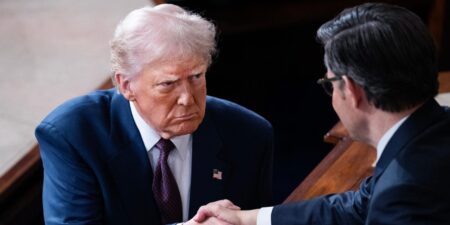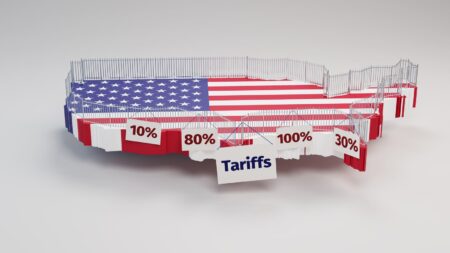U.S. President Donald’s Trump decision to impose trade tariffs on the country’s major and minor trading partners alike, and practically all nations in between has caused havoc in the global equity markets. Oil markets are reeling from the shock of the so-called Trump Tariffs too, and then some.
At 12:30 EDT on Monday, the Brent crude front-month futures contract closed down 1.65% or $1.08 at $64.50 per barrel. Meanwhile, the West Texas Intermediate crude futures contract was trading at $60.94 per barrel at 16:35 EDT, down 1.61% or $1.
Both crude benchmarks have shed over $10 a barrel since April 2. That’s the date last week, when Trump slapped a 10% “baseline” tariff on imports to the U.S., and much higher rates of up to 50% against dozens of countries. They include a number of key manufacturing centers in Asia.
Many countries have vowed to respond. China has already retaliated with new tariffs of its own on goods it imports from the U.S., with Trump vowing to respond with even higher tariffs against Beijing. But reports based on briefings by Trump administration officials also suggest 50 countries are willing to negotiate too.
However, with a distinct possibility of an all out global trade war and a potential recession in its wake, there is little to be bullish about oil prices. More so, because bearish sentiment was already well entrenched in world’s crude markets before the latest events unfolded.
Entrenched Bearish Sentiment
In March, the International Energy Agency projected global oil demand growth for 2025 to be in the region of 1.1 million barrels per day. Oil producers’ group Organization of Petroleum Exporting Countries put its own demand growth forecast at 1.43 million bpd for the year.
Even if an average of the two projections were to have materialized prior to the current market turmoil, the market would have still been in surplus given the relatively recent extraordinary rise in non-OPEC, especially U.S., crude production. According to the IEA, this surplus figure could well have been as high as 600,000 bpd.
Many of the market surplus projections were based on uncertain demand from China, doubts over the direction of the global economy, and only India buying more crude on the international markets, among the world’s big five consuming nations (i.e. U.S., China, India, Japan and South Korea).
And let’s not forget that after a major price correction caused by the Trump Tariffs came a not-so-minor one from OPEC+. Barely a day after the President’s move, the Saudi Arabia and Russia-led group announced that it would proceed with its plan to phase out production cuts by increasing output by 410,000 bpd in May.
Managing Spare Capacity OPEC+ Style
In a sense, an OPEC+ raise was only a matter of timing. But having balked at past opportunities to raise production at previous cyclical oil price lows, and opting to proceed with an output hike at a time of visible market upheaval appears bold to say the least.
Afterall, oil price expectations of OPEC+ and its reading of the market at a time like this is unlikely to be terribly dissimilar from wider conjecture. Which means the oil producers’ group has perhaps concluded that it would be more in control of oil prices in the event of a global downturn by making a move of its own now, than if it did nothing when Trump Tariffs-related uncertainty is already dragging crude prices down, all else being equal.
Once the initial turmoil subsides and the direction of crude demand becomes clearer, OPEC+ may, and probably will, adjust production again. And along the way, it can knock a few high-margin non-OPEC producers.
As for what may be in store for crude prices remains contingent upon if, and when, the current round of volatility triggered by Trump Tariffs ends. But even when it does, a restoration of trading on normalized market fundamentals is unlikely to see prices overshoot their lackluster pre-April 2 levels.
Read the full article here
















